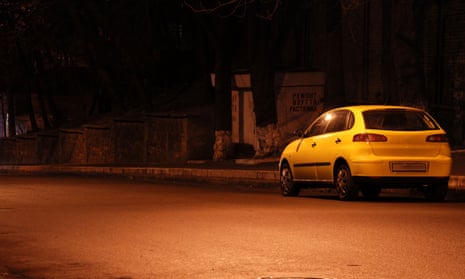Whether lighting is a deterrent to burglars or simply helps them see what they are doing has been a matter of hot debate. Now research suggests that when it comes to reducing theft from cars, it might be best to leave criminals in the dark.
Researchers found the level of night-time thefts from cars almost halved when street lighting was turned off between midnight and 5am, compared with staying on all night.
The authors suggest possible reasons for the results include that it is harder for offenders to see valuables inside a car without lighting, or assess a vehicle’s security, while it is also more difficult to remove items such as hub caps without adequate light.
“It is to do with opportunist theft,” said Dr Phil Edwards of the London School of Hygiene and Tropical Medicine, who led the project. “Without lighting it’s harder to see the laptop left overnight by accident on the passenger seat, for example.”
The study, which is published in the Journal of Quantitative Criminology, reveals how the team looked at data for various forms of crime, including violence, burglary and theft from vehicles, as changes were made to street lighting between April 2004 and September 2013 in Oxfordshire, Reading, West Berkshire and, until July 2013, in Wokingham.
Three types of changes to street lighting, from it being on all night, were examined: illumination being switched off between about midnight and about 5am, using white all-night illumination, and the dimming of lighting in the small hours.
The team found all forms of crime analysed were more common at night than during the day, but all declined over the years studied.
Perhaps counterintuitively, the study found that switching off the lights could bring benefits. When street lighting was turned off between about midnight and about 5am, the rate of total night-time crime fell by around a quarter, while thefts from vehicles fell by 44% – once changes in daytime levels of crimes, which gives a sense of crime fluctuations due to factors other than lighting changes, were taken into account.
However the team found this change in lighting was linked to a similar-sized rise in theft from vehicles in adjacent streets, which were lit throughout the night, suggesting the change may simply have displaced the problem to neighbouring roads.
Despite that, the team suggest that switching the lights off in the small hours might bring overall benefits, noting that when crimes committed at any time of the day were included, the move “was associated with a reduction in overall crime, burglary, and violence on both the focal streets and those adjacent”.
Edwards said the new work shows the complexities of decisions around whether and how to light the streets.
“It is clear from other studies that people like street lighting, it makes them feel safer,” he said. “But studies like ours are showing that actually the effects of street lighting aren’t that clear.”
